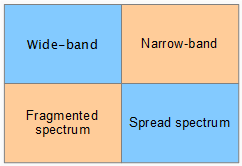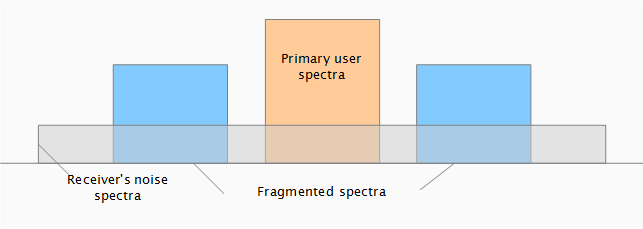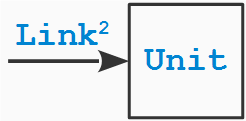
OFDM_MultiMode technology
The wireless communication equipment market is full but you can not find appropriate decision. In the same time the development of original equipment for your problem is impossible due a high cost and/or restricted timing schedule. It's a known situation, is not it? As a result many tasks cannot be solved at all or can be solved with performance that is out of the initial customer specification. Based on principle of reasonable universality technology OFDM_MultiMode from Link2Unit allows to solve this problem. OFDM_MultiMode can mix in one equipment unit different methods of information transmission that earlier needed separate equipment. To made it possible we has to develop fully original PHY level specification of OFDM_MultiMode. Thoroughly analysis of our customers needs and our experience allowed us to choose next working modes of the device that are vital for solving of most nonstandard tasks for wireless data transmission.
- Highspeed data transmission in wide bandwidth (wideband mode).
- Lowspeed data transmission in narrow bandwidth (narrowband mode)
- Lowspeed data transmission by spread spectrum (spread spectrum mode).
- Data transmission in fragmented bandwidth (fragmented spectrum mode).
Wideband mode is used for data flow speeds from 1 up to tens of Mbps. This mode is perfect for digital video, Ethernet traffic, etc. Spectra bandwidth in this mode is 3.5 MHz or more.

Narrowband mode is used for data flow speeds of 160 kbps - 1 Mbps. Spectra bandwidth in this mode is 0.3 - 3.5 MHz. As shown in figure below all signal power in this mode is concentrated in narrow band. So link budget and as a consequence communication range are substantially exceed those in highspeed mode. This mode is vital for transmission of different control information where data speed is low but transmission reliability must be highest.

Spread spectrum mode can be used for data flow speeds of 100 kbps - 3.2 Mbps. Spectra bandwidth in this mode is more than 10 MHz. Distinguishing feature of this mode is a possibility of data transmission for SNR value down to -13 dB. This mode is used primary for anti-jam communication.

Fragmented spectrum mode is largely similar to wideband mode complemented by opportunity of exclusion from used band some subbands occupied by primary users. This mode is intented for communication in overloaded bands where it's hard to find a continuous band of necessary width. Also it can be used for secure communication covered by signal of exterior user.

Combination of these modes in one modem is possible if scalable OFDM technology is implemented. Basic mode of modem is the wideband mode. So narrowband mode and fragmented spectrum mode are derived from wideband mode by removing of subcarrier clusters from transmitted signal. Spread spectrum mode also is easy derived from wideband mode by substantially decreasing FEC code rate for what an extra repetition code is used. Main challenges of spread spectrum mode implementation lie in field of development of detection and parameter estimation algorithms suitable for very low SNR conditions. Link2Unit's know-hows and extensive experience of our specialists were all used for development of low complexity algorithms for this mode. With the aid of OFDM_MultiMode all described working modes are interchangeable on the fly in one air link frame.
All advantages of OFDM_MultiMode technology are easily illustrated by the case of communication link between Ground Station (GS) and Unmanned Aerial Vehicle (UAV). Communication link from GS to UAV is as a rule lowspeed and used for transmission of flight control messages and for control of board equipment. Meanwhile this link must be most robust because its failure can lead to UAV loss. Wireless modem for GS to UAV link has to posses a highest sensitivity that is possible for signals with narrow bandwidth or for spread spectrum signal. If spread spectrum signal is used in GS to UAV link so anti-jam communication is possible that may be very desirable for military implementations. Communication link from UAV to GS is on the contrary highspeed. This link is used for data transmission from video camera, infrared scanner, radar, etc that leads to aggregate data flow of 10 Mbps and more. Modem for the link has to maintain bandwidth up to 10 MHz and more and data speeds up to tens of Mbps. Scalability for this link is also very desirable property. Scalability is used for increasing of link budget at the expense of data speed decreasing and may be very useful for expansion of UAV range at the expense of video picture quality lowering for example. In many UAVs two wireless modems are used for described task. The one is intended for GS to UAV link and other for UAV to GS link. Usage of two modems leads to increase of weight, power and cost. As an alternative Squared_Link SDR platform from Link2Unit may be used for GS to UAV and UAV to GS links. In this case narrowband or spread spectrum mode is implemented for GS to UAV link and wideband mode for UAV to GS link. Structure of TDD air link frame for this task is pictured in figure below. GS to UAV and UAV to GS links may use common frequency F0 or different frequencies F0 and F1. If different frequencies and spread spectrum mode in GS to UAV link are used so UAV to GS link is not disclose GS to UAV link leading to anti-jam communication property.

